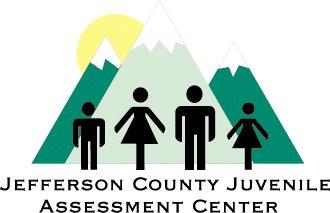
Jefferson County, Colorado
Interview with Craig McPherson, Director
How are youth referred to your center? Youth are either referred through the community (i.e. parent, schools, municipal and county courts and community partners) or through Law Enforcement (for delinquency or behaviors).
How many youth do you serve per year? Approximately 2,000 youth
What data and outcomes does the Juvenile Assessment Center track? In 2018 the program implemented a new, customized managed information system in an effort to not only track outcomes for ourselves and programmatic improvements, but also to be able to show our stakeholders and community the value we bring. We track an extensive amount of information. Through all the information we track and analyze we have been able to identify programmatic shortcomings and subsequently been able to expand programming to better address our communities needs. Furthermore, we have been able to identify gaps within our continuum and work with community partners to address them.
What is the biggest challenge your assessment center faces? Providing effective support and intervention for youth identified as being at risk or currently victims of human trafficking. Several years ago Jefferson County recognized the community had a significant human trafficking problem. This led to a partnership between the JCJAC, Law Enforcement, District Attorney, FBI Innocence Lost Task Force, Courts, Human Services, School District and Collaborative Management Program. The High Risk Victim Screening Tool was first implemented in our jurisdiction and is used throughout the State of Colorado. The tool helps identify high risk youth who are most vulnerable to being exploited. Partners work together on a multi-disciplinary subcommittee to look closely at suspected cases of trafficking in the community; the focus is on protecting potential or current survivors of trafficking in addition to aggressively prosecuting those who are sexually exploiting children. Although we are much more effective in identifying survivors finding effective and long lasting interventions and options for these youth and families can be incredibly difficult.
What is your favorite tool used in screening or assessment and why? JCJAC Assessment Specialists named the MAYSI-2 as their favorite screening tool. The appealing aspects of the MAYSI-2 are the consistent results it generates. It sometimes uncovers individual or family challenges that may otherwise go unnoticed or addressed. It’s a convenient invitation to probe sensitive topics while reducing or eliminating a youth or family member feeling judged. At the JCJAC it is a valuable tool for less experienced team members to use as a foundation for skill development and professional growth.
What is the process your center uses to ensure youth are connected and matched with services after an assessment? Coordination of local resources to support families is the center piece of the JCJAC’s mission statement. Two key components of connecting families to services are maintenance and training. Maintaining a comprehensive and updated list of agencies operating within, or close to, Jefferson County is essential and never ending. All team members, including leadership, seek out new or untapped agencies that offer programing designed to support the needs of our clients. We present approved agencies during team meetings and add them to our toolbox or referral list. Training and education is built in to searching for new programing and informing our team of the services offered, referral process, cost and method of payment, rule-in and rule-out criteria, location(s) served, and a host of other variables. Knowledge gained during the search for and onboarding process of new agencies are also used when referring a family. Assessment Specialist better understand what questions to ask our clients to provide appropriate and targeted referrals.
How does your center divert youth from the JJ system? Through a partnership with our District Attorney’s Office we have been able to expand services that divert youth from receiving charges in the district Court. Specifically we expanded our Low Risk Offender Program (LROP) and Pre-File Diversion (PFD) screening. The Low Risk Offender Program is now a stand-alone program assisting youth in completing requirements to avoid further court involvement. In the PFD screening, the case manager assists in identifying appropriate referrals and connecting them to their Pre-File Diversion officer. Additionally, in 2019 the JCJAC again expanded programming with the addition of a Truancy Diversion Program. Through a partnership with the Jefferson County School District and the District Truancy Court , we developed alternative programming for youth who are at high risk for a truancy petition being filed with the court. The case manager works with the family, school professionals, mental health professionals, and others to assist the youth with overcoming school attendance barriers. There are often many underlaying issues contributing to truancy and by having a dedicated case manager for these youth we are better able to identify and address these issues.
What are you looking forward to most with the development of the NAC? My hope for the NAC is centralized support for communities looking for a better way to impact their delinquent populations. A better-defined path to increased national support of Assessment Centers. That collectively we learn from and support each other. We come together and celebrate our successes and learn from our setbacks. I am thrilled with the progress made so far. I think the launch and development of the NAC is an exciting time for all Assessment Center agencies and the communities they serve.
|